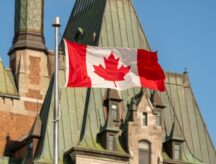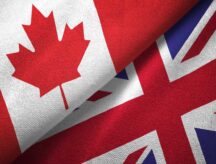How to navigate the rising cost of living in Canada
As Canada continues to welcome an ever-increasing number of newcomers, inflationary pressures and a rising cost of living continue to raise questions regarding the expenses that newcomers will face when settling in their new home.
Fortunately, through a combination of federal and provincial government supports, and resources available to individuals, newcomers to Canada have options to navigate the rising cost of living in the country. Read on to learn what government assistance is available, and what tools and resources you can use to manage costs and save money.
Discover if You Are Eligible for Canadian Immigration
The current situation
In the 2022 Consumer Price Index (CPI)—a survey program (conducted by the Canadian government) that is used as a measure of price increases through comparison of a fixed basket of goods and services—Statistics Canada reported the largest ever increase in the CPI (i.e.: increase in the price of goods and services in Canada) since 1982.
Another recent report released by Statistics Canada found that nearly one in four Canadians was unable to meet an unexpected expense of $500 CAD, with 44% of Canadians raising additional concerns about the rising prices of food and gasoline.
Federal Government Supports
In response to these inflationary pressures (and following the 2022 Fall Economic Statement), the government of Canada has introduced and maintained several policies to aid residents in addressing their expenses. Many of these policies have been instituted through the Affordability Plan, which encompasses several measures representing the federal government’s $12.1 billion CAD investment in aiding affordability.
One of programs is the Goods and Services (GST) Tax Credit, which is being doubled for a six-month period beginning November 4, 2022. This modification affects approximately 11 million Canadians who are considered to have low or modest income. Single individuals without children can expect an additional payment of up to $234 CAD, while a couple with two children may receive as much as $467 CAD or more. On average, seniors (aged 65 and over) will receive an extra $225 CAD.
The Canada Workers Benefit (CWB) is another program designed to supplement the income of the lowest-paid workers who often play essential roles in the economy. The 2022 Fall Economic Statement proposed $4 billion in funding over six years to automatically issue biannual advance payments to qualified individuals, commencing in July 2023. The CWB may provide as much as $1,428 CAD for single workers or up to $2,461 CAD for a family through the existing tax return payment. This will go a long way in helping to negate the rising cost of living.
In an effort to ease the financial burden of higher education, the federal government has also made the federal portion of all Canada Student Loans and Canada Apprentice Loans permanently interest-free. This applies to loans currently being repaid.
To promote affordable dental care, the Canada Dental Benefit was introduced in September 2022. This initiative provides tax-free payments to eligible parents or guardians to cover dental expenses for children under the age of 12. Those with an annual family income under $90,000 per year level without dental coverage can receive payments up to $650 annually over the next two years.
Prior to the 2022 Fall Economic Statement, several additional measures have been implemented under the government's Affordability Plan. These include cutting childcare fees by an average of 50 percent in Ontario, increasing the Old Age Security (OAS) pension by 10 percent for seniors 75 and older, and indexing various benefits to inflation.
Note that eligibility for these programs can vary greatly depending on your own personal circumstances, and which program services you would like to take advantage of. For more information on credits, benefits, and refunds available from the federal Canadian government, visit our dedicated tax page here.
Provincial government supports
Provincial governments also have a part to play in aiding the rising cost of living, with most provinces having their own specific programs to cater to their residents. These programs can encompass aid for everything from medical expenses, gaining employable skills, and receiving employment assistance to childcare, workers benefits, and more—depending heavily on the province within which you reside.
Notably, the responsibility to guarantee affordable housing and housing supports are largely the responsibility of provincial governments. Below is a list of each provincial government’s services and programs page, with details provided:
- Alberta;
- British Columbia;
- Manitoba;
- New Brunswick;
- Newfoundland and Labrador;
- Northwest Territories;
- Nova Scotia with housing programs listed here;
- Ontario;
- Prince Edward Island;
- Quebec;
- Saskatchewan; and
- Yukon.
Tools and resources
In addition to these government supports there are also various tools and resources that individuals in Canada can use when navigating their essential costs.
- Budgeting: There are a number of free applications that can help newcomers with budgeting and planning their expenses. Tools like your respective bank’s budgeting app, in addition to the third part applications like Mint, Koho, and YNAB are an easy and free way to manage your expenses;
- Saving: Other resources can help with savings and even offer cash back on purchases. Again, Koho is a popular choice in Canada, along with other apps like Ampli, and PC Optimum’s cash back function, which can prove useful. Note that cash back programs are generally only with partnered retailers, so confirming where your cash back is eligible with each service is essential;
- Smart Shopping: These tools offer customers insight into the products that they are purchasing, including price changes, better offers, and discount codes. Popular resources in Canada include Save.ca and Flipp both of which scour the web for discount deals. In addition, web browser plugins like Honey are easy ways to view price drops or hikes in online products you may be shopping;
- Food, Grocery, and Essentials: There are a multitude of different tools, resources and programs that newcomers can use to save on their essentials. Tools like Flipp and Save.ca are relevant, however newcomers can also make use of loyalty programs (like PC Optimum, and Airmiles) with their grocery store’s partners, earning cash-back and savings on their purchases. Also, many stores have price matching offers which newcomers can utilise to make sure they are getting the best price on all of their items. Note that both are heavily dependent on each store’s policy, and so confirming all relevant details can be crucial;
- Housing and Miscellaneous: Classifieds websites can be invaluable when looking to purchase second-hand items, conduct item swaps, and even to find an apartment to rent or buy. Apps and websites like Facebook Marketplace, Kijiji, Classifieds Canada, and others can save you expenses an all sorts of goods, and further also help avoid real estate agent fees when looking for housing;
- Travel and Transportation: A number of resources exist to help Canadians travel and commute, including Skyscanner and Tripadvisor, which search favorable rates for airfare and room and board respectively. For more domestic travel, newcomers can avail apps like Transit, which compares commuting options, and GasBuddy, which compares fuel prices and public transit costs to give users the best deals available;
- Education: Many online resources can also help newcomers gain skills and continue their education, at marginal to no cost to them (though it should be noted recognised certifications can often require fees to be paid)—these include YouTube, SkillShare, Khan Academy, Coursera, Udemy, Codeacademy, Linkedin Learning, and others. Note that while some of these platforms may also feature paid courses, much of the information is often free; and
- Free activities: To explore low-cost leisure activities, apps like Canoo can be helpful when reviewing options in your local area. Eventbrite can also be a great platform to learn about free or low-cost events in your vicinity. An additional web search here can be beneficial as well.
- Do you need Canadian immigration assistance? Contact the Contact Cohen Immigration Law firm by completing our form
- Send us your feedback or your non-legal assistance questions by emailing us at media@canadavisa.com







